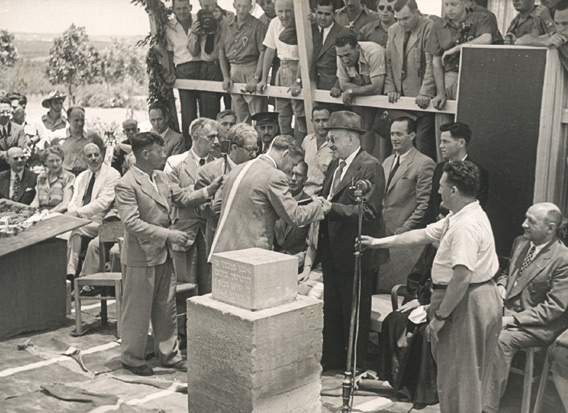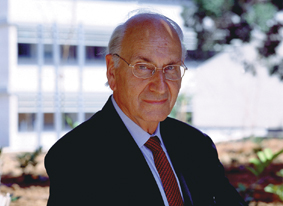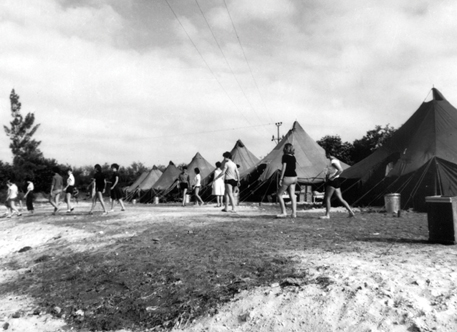70 Years Ago
"‘Harnessing’ the Sun - Daniel Sieff Institute," by a Scientific correspondent
The Palestine Post, March 27, 1936
The Sieff Institute is fortunate in having as its director a man who is only the less known as a chemist because he is so distinguished in other spheres: Professor Weizmann, president of the Zionist Organization. In actual fact, a large part of the work carried out in the Institute is in connection with fermentation, a subject in which Dr. Weizmann has always been particularly interested. Possibly of direct industrial interest are the experiments which are being carried out on the further breaking down of the soy-bean protein, with the idea of converting it to a product of meat-like flavor and nourishing properties by means of chemical fermentation.
Energy from the Sun: It has long been the ambition of chemists to harness the sun as a direct source of energy. Manufacturing processes could then be carried out without the need of energy derived from the fuel or electricity.
64 Years Ago
"Laboratory of C. Weizmann"
(translated from Hebrew)
Davar, January 20, 1942
The London Star reports that its correspondent spoke with Dr. C. Weizmann, who said he was now busy with important chemical inventions but of course could not reveal any details.
60 Years Ago
"Science Festival in Rehovot. Establishment of a Chaim Weizmann Research Center," by S. Svivlutsky (translated from Hebrew)
Hagalgal, June 16, 1946
Rehovot - one of our oldest settlements, in which several world-renowned science institutions, such as the Experimental Agricultural Station and the Sieff and Wolf Institutes have been established - lived last week through great, historic days that will not soon be forgotten. Distinguished guests flocked to Rehovot in large numbers, more than a thousand in all. The creme de la creme of all the higher political, cultural and economic institutions, senior figures of world science, and local and foreign government representatives - all came to the Daniel Sieff Research Institute to participate in the laying of a cornerstone for the biophysics and physical chemistry institute named after Chaim Weizmann.

55 Years Ago
"Scientific Work in Israel Praised. Weizmann Institute Wins Recognition Far Quicker Than Its Backers Expected," by Sydney Gruson
The New York Times, April 29, 1951
Far quicker than even its most enthusiastic backers had hoped, the Weizmann Institute of Science has won recognition for outstanding work. This evaluation of the Institute has been made by men who should know - Prof. Harold Urey, American nuclear physicist and winner of the 1934 Nobel Prize in Chemistry, and Sir Robert Robinson, British chemist and winner of the 1947 Nobel Prize in Chemistry. They have been visiting Israel and they lectured at the Institute on the same day last week. "I don’t know any place in America and certainly not in Britain where there is the same spread and the same intensity of work," Professor Robinson said.
50 Years Ago
"Prenatal Diagnosis of Sex Using Cells from the Amniotic Fluid," by Leo Sachs and Mathilde Danon of the Weizmann Institute of Science and David M. Serr of Rothschild-Hadassah University Hospital
Science, March 30, 1956, Vol. 123, No. 3196, p. 548
We have found, from an examination of the fluid obtained from viable human fetuses in the sixth and seventh months, that a prenatal diagnosis of sex can be made at these stages.

Today: Analysis of Amniotic fluid, or amniocentesis, is commonly used for prenatal diagnosis.
"Israel Nerve-Centre. The Weizmann Institute of Science," from a Special Correspondent
The Times, July 2, 1956
The staff is now engaged in some eighty separate projects of fundamental and applied research; and there is a constant exchange of information and of personnel between Rehovoth and leading scientific institutions in many countries of the east as well as of the west. The services which Rehovoth has already rendered to Israel are remarkable. The exploitation of oil, phosphates, and other mineral resources of the Negev; the foundation of the plastics industry; the development of agriculture; the advance of irrigation; and many of the other lines of progress.
Today: At any given time, Institute scientists engage in some 1,200 research projects. The Institute's basic research has led to the development of numerous products licensed to various companies that pay royalties to the Weizmann Institute.
45 Years Ago
"Ladies in the Lab," by Helga Dudman
Rehovoth Magazine, Spring 1961
Of the Institute’s 220 scientists, over 11 percent are women. One female researcher spends days on end in company with an animal proverbially frightening to female hearts. Dr. Nechama Haran-Ghera of the Department of Experimental Biology, induces tumors in mice. "To learn their mechanism and try to find what causes them."
Today: Prof. Haran-Ghera's research has provided the scientific basis for clinical trials expected to begin soon.
40 Years Ago

"Science Campers"
The Jerusalem Post, June 24, 1966
Fifty students in the 10th and 11th grades from all over the country have been chosen from among the 200 who applied for this year’s Science Summer Camp at the Weizmann Institute of Science, which will be held between July 3 and 15.
Today: Weizmann's youth camps are held every year. Some of the youngsters who formerly took part in these camps now work as researchers or head departments at the Institute.
"A Science-Based Industry"
Export Journal, November 1966
In his spare time, Professor Jaffe began experimenting with a science-based industry and eventually decided to devote a good deal of his time to it. His small company took premises near the Institute and he soon built up a team of scientists and technicians.
Today: The company created by Prof. Joe Jaffe evenyually evolved into today's El-OP, a world leader in electro-optics.
"The Feinberg Graduate School"
Rehovoth Magazine, Winter 1966-1967
The Feinberg Graduate School began the 1966/67 academic year with a fine new building and an increased student body - 282 young men and women, the great majority of whom are studying for their doctorates, the rest for masters’ degrees. Most of the students are Israelis, but a considerable number, some 15%, are from overseas, including 13 from the U.S. and smaller contingents from Argentina, Belgium, Britain, Canada, Chile, France, Greece, Holland, India, Italy, Japan, Mexico, South Africa and Yugoslavia.
Today: About 1,000 students now pursue advanced degrees at the Feinberg Graduate School. Some 9% of Ph.D. students and 32% of postdoctoral fellows are from abroad.
35 Years Ago
"Science Industries Getting New Homes," by Sarah Honig
The Jerusalem Post, June 1, 1971
Rehovot - Ground was broken here yesterday for Kiryat Weizmann, a center for science-based industries. The industrial park will cover 156 dunams of Weizmann Institute land and will cost about IL50m.
Editor's note: Kiryat Weizmann industrial park, the first of its kind in Israel, was established on the initiative of the Weizmann Institute.
Today: Science-based industries in the park make use of the Institute's laboratories and libraries.
30 Years Ago
Institute Wheat Features in United Nations Speech"
Interface, February-March 1976
A high-yield type of wheat developed by the Institute’s Plant Genetics Department figured in a major policy speech of Israel’s Ambassador to the United Nations Chaim Herzog. In the U.N. address, Herzog declared that Israel was ready to share the fruits of her research and experience with other Middle Eastern countries, singling out the Institute-developed wheat as a specific example of the type of contribution Israel could make to the development of the entire area.
20 Years Ago
"Egyptian Student Feels at Home on Campus"
Interface, No. 2, 1986
Mahmoud Fawzi, a graduate student in the Institute’s Hormone Research Department, makes no secret of his nationality. On the contrary, he has an Egyptian flag sewn on the knapsack he carries around with him almost everywhere. Fawzi is the first Egyptian to be enrolled at the Institute’s Feinberg Graduate School.


